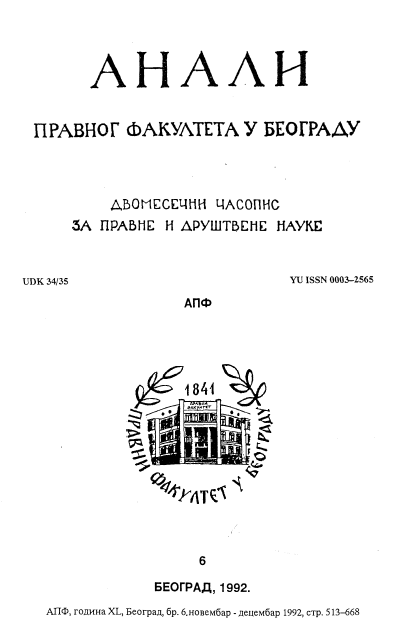ПРАВНА ПРИРОДА ЕТАЖНЕ СВОЈИНЕ
LEGAL NATURE OF CONDOMINIUM
Author(s): Zlatko StefanovićSubject(s): Civil Law
Published by: Правни факултет Универзитета у Београду
Keywords: Condominium (floor-by-floor ownership); Legal nature; Co-wnership
Summary/Abstract: Historical development of conception of legal nature of condominium (floor-by- floor ownership) begins with total negation, which is a reflection of the Pandects theory of the substance of ownership over buildings. First theories and laws classify it as statutory servitude. The basis for modern conception of the condominium was supplied by Planiol and Ripert. They consider that there exist different and divided ownerships, one upon the other, and interlaced with the ownership over parts which are necessarily common or determined for joint use of different owners. Two decisive steps have been taken: one was abandoning the traditional Pandects conception of a building, as the only possible object of ownership, and the other the establishing of different rights concerning some parts of the building. According to modern theories, this is a unique institute which consists of various powers (Eincheitstheoris, and the like). Such ideas are mainly based on coercive statutory regime of the floor-by-floor ownership. By leaving to the condominium owners to determine freely the form of ownership over the parts of the building belonging to them, many difficulties of legal nature are avoided, while significant economic effects are schieved. By means acquired by sale of socially-owned apartments to the holders of dwelling right, it is possible to finance only the construction of so-called joint parts of the building, which results in reduction of the price of apartments. At the same time, the regime of ownership remains, while former unsuccessful categories are abandoned (such as social ownership, the right to an apartment).
Journal: Анали Правног факултета у Београду
- Issue Year: 40/1992
- Issue No: 6
- Page Range: 559-570
- Page Count: 12
- Language: Serbian

